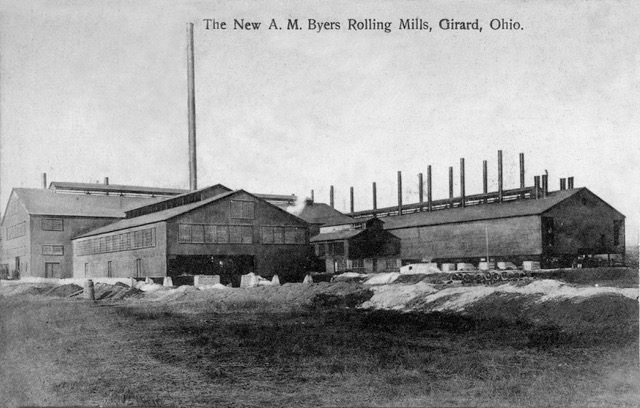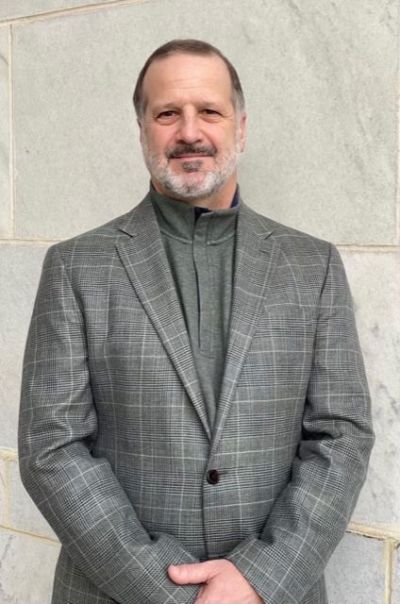In this column La Gazzetta will introduce notable members of our local Italian American community. We will hear from men and women whose ancestors’ contributions have resulted in today’s outstanding, productive citizens.
Joseph “Joe” Lambert (Lamberti) hails from Girard, in Trumbull County, OH. Just northwest of Youngstown, this once highly industrialized area was a magnet that attracted immigration from Italy well into the 1960s. Lambert has a long career as a health care administrator. A history major at Youngstown State University, he recently published a biography on Youngstown industrialist Joseph G. Butler, Jr. His next book, a biography of Ohio Civil War Governor David Tod, published by Kent State University Press, is due out later this year. Let’s give Joe a chance to talk about his hometown and its Italian community.
La Gazzetta (LG): Can you tell us about your hometown and family roots in Italy?
Joe Lambert (JL): Thank you for this opportunity. Girard was originally a part of Liberty Township and was founded in 1838 by four enterprising businessmen. At the time, the much talked about Pennsylvania and Ohio Canal was on the verge of reality. These men, led by David Tod’s coal mining interests in Brier Hill, Mineral Ridge, Hubbard, and Girard, saw the value of the canal to help transport his coal to new customers in Cleveland.
Ever since, Girard’s history has been closely tied to transportation and, more so, to industry and manufacturing. Iron manufacturers of the 19th century like the Girard Iron Company, (later known as the A.M. Byers Company), the Girard Rolling Mill, and the Girard Stove Works gave way to more modern enterprises like the Syro Steel Company.
Aside from iron and steel, Girard was also known as a center for leather manufacturing. The Krehl Tannery produced finished leather goods during the last three decades of the 19th century before it was destroyed by fire. Taking its place for the next seven decades of the 20th century was the Ohio Leather Company (my uncle Carmen Lambert worked here.) Each of these manufacturers required immense amounts of labor and attracted men and women from all over, including European immigrants.
Other industries from the Mahoning Valley required great numbers of laborers and relied on an influx of immigrants from Europe and, of course, from Italy to work in their factories.
The Lamberti Family hailed from Bellona, located just north of Naples in the southern region of Campania. My grandparents, Giuseppe Lamberti and Maria/Mary (Cafaro) Lamberti, immigrated to the U.S. in 1905. They came through Ellis Island not long after it opened. Although Giuseppe desired to someday return to Italy, he and Mary remained in America and raised nine children in Girard. Giuseppe or, Joseph, had brothers that also made it to the Mahoning Valley to work. My grandfather first worked in a PA coal mine but found the work too dangerous. He dreaded the long 12-hour shifts. Many times, he went to work when it was dark only to end his shift after the sunset. My grandfather left the mine to work at a mill in Girard.
LG: What can you tell us about the Italians who immigrated to Girard around the turn of the century?
JL: Beginning in the late 19th century, Italians started arriving in Girard to find employment in the town’s iron operations. The A.M. Byers Company was a puddling mill. Puddling was a skilled iron-making process that utilized immense heat to convert pig iron into a stronger structural grade of metal called wrought iron. Puddlers were skilled workers and typically men of older European stock, not recently arrived immigrants.
My grandfather and many more Italians found employment there where they worked as common, unskilled laborers. It was quite dangerous working around the base of an iron furnace. Italian laborers at the puddling mill were exposed to the intense heat of the furnaces, especially those who had to stoke the furnaces with coal. It was a dirty job.
One of the first skilled positions that Italians began to learn was masonry or bricklaying. They learned to line the many blast furnaces around the Mahoning Valley with fireproof bricks.
LG: Where did Italians settle in Girard?
JL: The Flats, which no longer exists, was an area near the Byers operation where many Girard Italians like the Lambertis lived. Over time, Italian communities moved uptown away from the unhealthy mills and the Mahoning River. Some managed to use their entrepreneurial talents to get into the mercantile business by opening small stores. Market Street was one such location where Italian owned stores sprang up. My grandfather eventually moved his family to Market St.
LG: Where did the early Italian arrivals attend religious services?
JL: It was not until 1892 that Girard finally had its own Roman Catholic church. Prior to the dedication of St. Rose, Girard’s Catholics worshipped in private homes or walked miles to neighboring parishes to worship. In 1913, St. Rose Elementary School opened. I am a proud alumnus, class of 1981. Even at that later date I remember several fellow classmates speaking Italian fluently.
LG: How Italian is Girard today?
JL: The Italian community at large is alive and well today, as succeeding generations hold dear their ethnic traditions and strong family values. For decades, Girard’s Italian Americans have dominated all facets of life in the community taking the lead in business, social, education, healthcare, and civic affairs. Girard has long been identified as one of the most ethnically Italian communities in all the Mahoning Valley.
Every July the Girard Mount Carmel Festival kicks off at the Italian Fraternal Home on Wilson Ave. It is a time to honor their ancestors, their Catholic faith, and take pride in their heritage.
LG: Tell us about why you co-authored “First Citizen: The Industrious Life of Joseph G. Butler, Jr.”
JL: The history of the Mahoning Valley is full of fascinating and wonderful personalities who are worthy of such study. Mr. Butler stands out because of his benevolent spirit and efforts to improve the quality of life. Like many, I knew he built the Butler Institute of American Art but the more I learned about the valley’s significant events, Butler seemed to have played a part. And he left behind a wealth of information including letters and books to draw from. But it was scattered and needed pulled together. These, along with other primary and secondary sources, helped to tell his life story more fully. It just had to be told chronologically and put in proper context. Although his legacy lives on, his worthwhile life deserved a fresh perspective and hopefully a new appreciation for all that he did.




